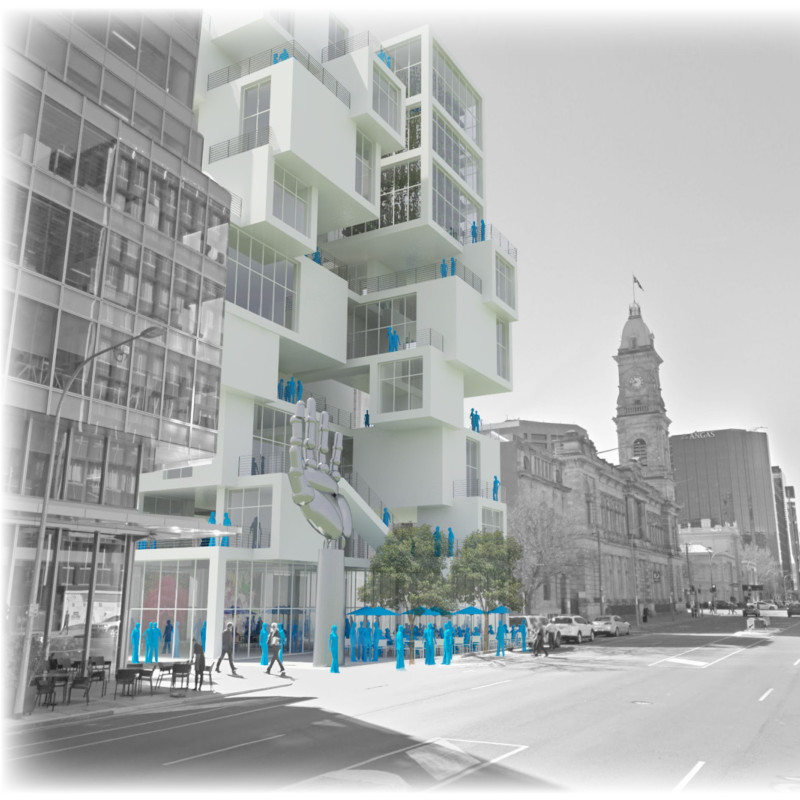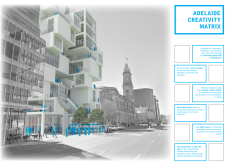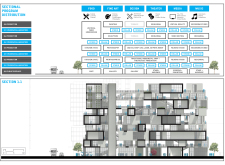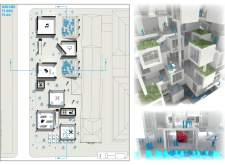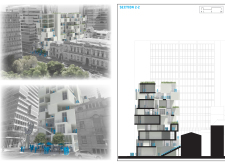5 key facts about this project
**Overview and Intent**
The Adelaide Creativity Matrix is a contemporary architectural design located in the central district of Adelaide, Australia. The structure is intended to cultivate a collaborative environment for the arts by integrating various disciplines, including food, fine arts, design, theater, media, and music. This facility aims to provide spaces that encourage interaction among artists and the public, thereby fostering a vibrant culture of creativity.
**Spatial Configuration and Community Interaction**
The design exemplifies a "porous matrix" concept, characterized by an adaptable spatial arrangement that accommodates multiple artistic practices concurrently. The architectural layout comprises interconnected studios, performance areas, and communal zones, facilitating easy communication and collaboration among users. Ground-level facilities are designed to be accessible and welcoming, reinforcing community engagement and participation in artistic activities.
Key functional areas include a vibrant ground floor, which serves as a communal hub with cafes, exhibition spaces, and performance areas, supporting Adelaide's role as a center for public gatherings and festivals. Above this, mixed-use levels host spaces for fine arts studios, culinary practices, rehearsal stages, and media production, which promotes interdisciplinary dialogue and synergy across various creative fields. Vertical circulation elements invite collaboration by providing shared amenities that enhance user interaction.
**Material Selection and Environmental Considerations**
The material palette for the Adelaide Creativity Matrix reflects a commitment to sustainability while achieving a visually engaging aesthetic. Reinforced concrete offers structural integrity, while extensive use of glass facades enhances natural lighting and connects interior spaces to the surrounding environment. Metal balconies and railings contribute to the building's modern style and accessibility.
Incorporating green roofs and vertical gardens not only improves air quality but also promotes ecological sustainability, aligning with contemporary environmental design principles. These features facilitate a connection to nature, enhancing user experience and well-being within the urban setting. The design also prioritizes flexible public spaces that can be adapted for various community events, inviting active participation and reinforcing the role of the arts in public life.


